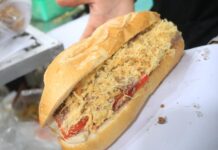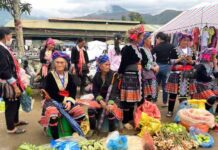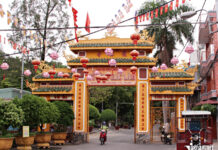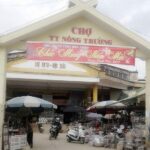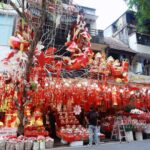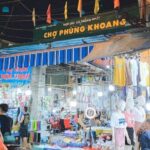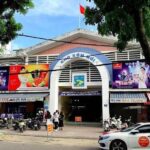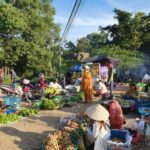The market’s name originates from a woman who sold fish
The name ‘Cho Ba Dinh’ was not given by the authorities but by the locals. Mrs. Le Thi Nu, affectionately known as Sau Nu, owned a fish and shrimp stall in front of house number 31 on To Hien Thanh Street. Born in Phu My district, Binh Dinh province, she moved to Pleiku with her family during the war years.
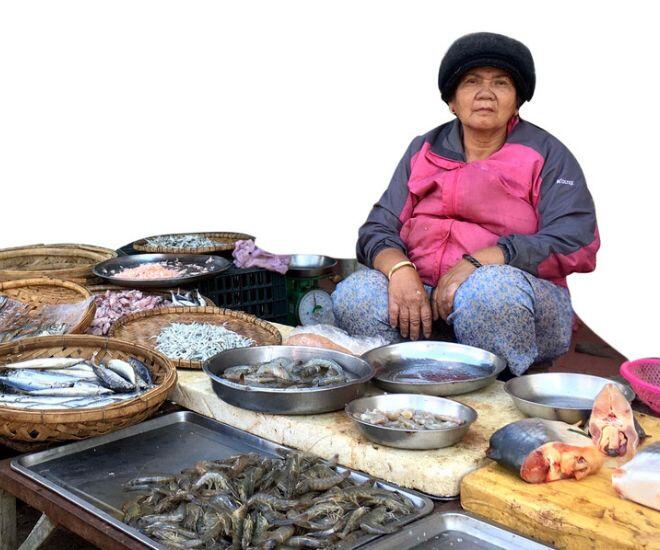
After marrying Mr. Do Van Hien, she gave birth to their first son, whom they named Dinh. Following the traditional naming custom, the parents are often referred to by their first child’s name to avoid using their actual name, which may be considered rude. Hence, the couple became known as ‘Mr. Dinh’ and ‘Mrs. Dinh’, and Sau Nu’s stall was also affectionately referred to as ‘Ba Dinh’s stall’ by the locals. Over time, the area became commonly known as ‘Ba Dinh Market’
.
Recalling the early days, Sau Nu shared that in the early 1990s, she and her husband struggled to provide for their ten children amid financial difficulties. Their challenging circumstances compelled her to find a way to support her family. Noticing that some women from the nearby Pleiku Roh village were selling vegetables, meat, and seafood at the intersection near her house and making a decent profit, she decided to set up a small stall selling fish and meat next to them.
“Back then, my stall was the largest in the area. Thankfully, business went well. From just me selling at first, more people gradually joined, and before long, the place became known as Ba Dinh Market,” she reminisced.
From a small stall to a market with hundreds of households
Initially, the market consisted of only a few vendors, gradually increasing to 15-20 sellers at the intersection of Nguyen Trai, To Hien Thanh, and Ho Xuan Huong streets. Today, the market boasts over 200 households trading along these three roads. Once a small suburban market, Ba Dinh Market is now nestled in the heart of the city, amidst the ever-growing urbanization. Nonetheless, it retains its familiar routine: opening early in the morning until noon, after which the stalls simultaneously pack up and take a break.
Not only does Ba Dinh Market have a unique history, but it also preserves traditional trading cultural aspects. In the past, the vendors here did not engage in ‘bargaining’ – goods were priced at a fixed rate, and there was no haggling over prices. This was mainly because most of the products were agricultural produce, vegetables, and fruits grown by the locals themselves, resulting in standard and non-fluctuating prices. However, as time passed and the number of traders increased, the trading dynamics evolved, partly due to the intensified competition.
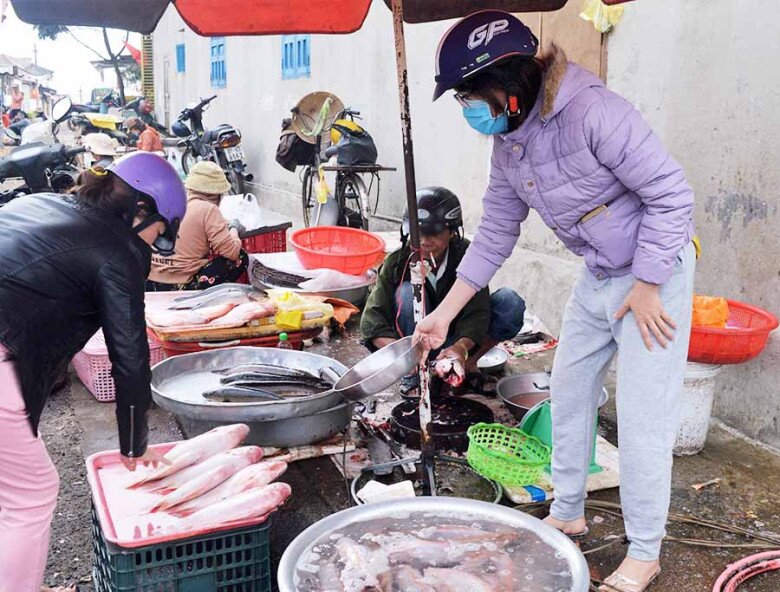
One of the market’s unique attractions is the diverse and fresh produce it offers. Local residents shared that they often stop by the market after their morning exercises to purchase food for the day. Despite its modest size, the market has everything: meat, fish, shrimp, vegetables, and fruits. The reasonable prices and guaranteed quality have fostered a loyal customer base, with many patrons frequenting the market for decades.
Over time, specialized trading areas have emerged along the surrounding roads: seafood and poultry are concentrated on Ho Xuan Huong Street, beverages and snacks on To Hien Thanh Street, while clothing, household items, and footwear are mainly sold on Nguyen Trai Street. The intersection of Nguyen Trai, To Hien Thanh, and Ho Xuan Huong is the busiest area, offering a comprehensive range of daily necessities.
The challenging equation of managing an informal market
Despite being nearly 30 years old, Ba Dinh Market remains an informal market without official planning. This has led to several issues, including sidewalk encroachment, traffic obstruction, aesthetic concerns, fire hazards, and environmental pollution. In 2017, the People’s Committee of Yen Do Ward proposed relocating the market to the Pleiku Roh village football field. However, when consulting the community, the villagers disagreed due to concerns about their daily lives and environment, so the plan was temporarily shelved.
Currently, the Yen Do Ward authorities have established a self-management team that regularly patrols the market area to remind and address cases of sidewalk encroachment and improper parking. Nonetheless, this is only a temporary solution. Since the market lacks legal status, the state cannot collect taxes, yet it must still deploy resources for daily monitoring and supervision.
“Trading is a legitimate need, and we cannot prohibit it, but we also cannot allow an informal market to continue operating indefinitely,” shared a local official.
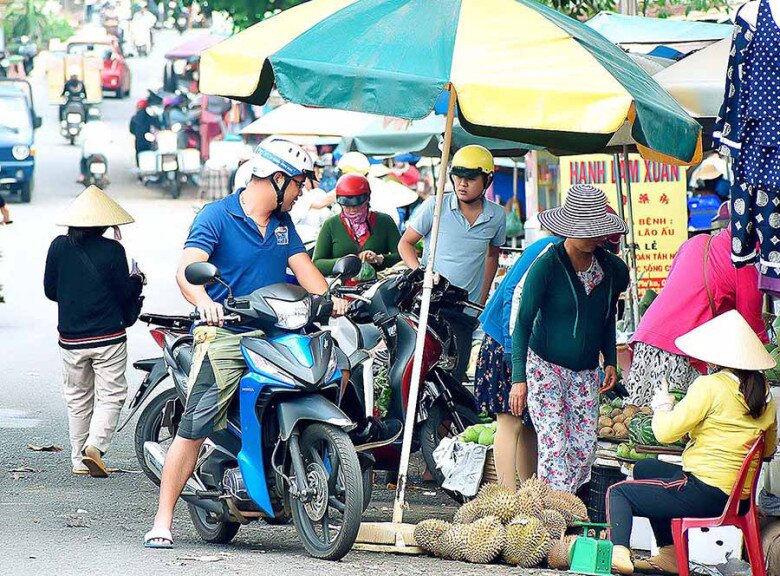
There is no denying the role of Ba Dinh Market in the lives of the local community. Hundreds of households rely on the market for their livelihood, and it has long been an integral part of Pleiku’s daily rhythm. However, to effectively manage the market and ensure urban order and safety for the residents, the local authorities need to devise a long-term strategy that balances the interests of the traders and the city’s development requirements.
The People’s Committee of Pleiku City has instructed the People’s Committee of Yen Do Ward and relevant functional forces to intensify propaganda and mobilize the people to comply with regulations on traffic safety corridors, environmental sanitation, and fire prevention. Simultaneously, the city is studying planning and arrangement options to ensure that traders can legally and conveniently conduct business without affecting the urban order and aesthetics.
Most traders wish for a properly planned market where they can trade with peace of mind. “Trading here is very convenient, but it would be better to have an officially recognized location. This would benefit both the sellers and buyers and make it easier for the authorities to manage,” expressed a trader.
The Plateau’s Marketplace Charm: How Moc Chau’s 60-Year-Old Tradition Endures with its Unique Offerings.
Nestled in the Moc Chau Highlands of Son La Province, the Town Farm Market has retained its authentic charm for over 60 years. This market, with its rich history and unique cultural offerings, has become a beloved destination for locals and visitors alike. The market boasts a diverse range of highland specialties and a distinct food culture that has remained unchanged since its inception.
The Sky-High Market of An Giang: A Western Peak Experience
Standing tall at over 700 meters, Mount Cam (An Giang) is renowned not only for its breathtaking natural scenery but also for its unique mountain-top market, Cho May. This market, perched amidst the mountain’s peak, embodies the essence of local culture and tradition, offering visitors a glimpse into the vibrant life of the region.




















